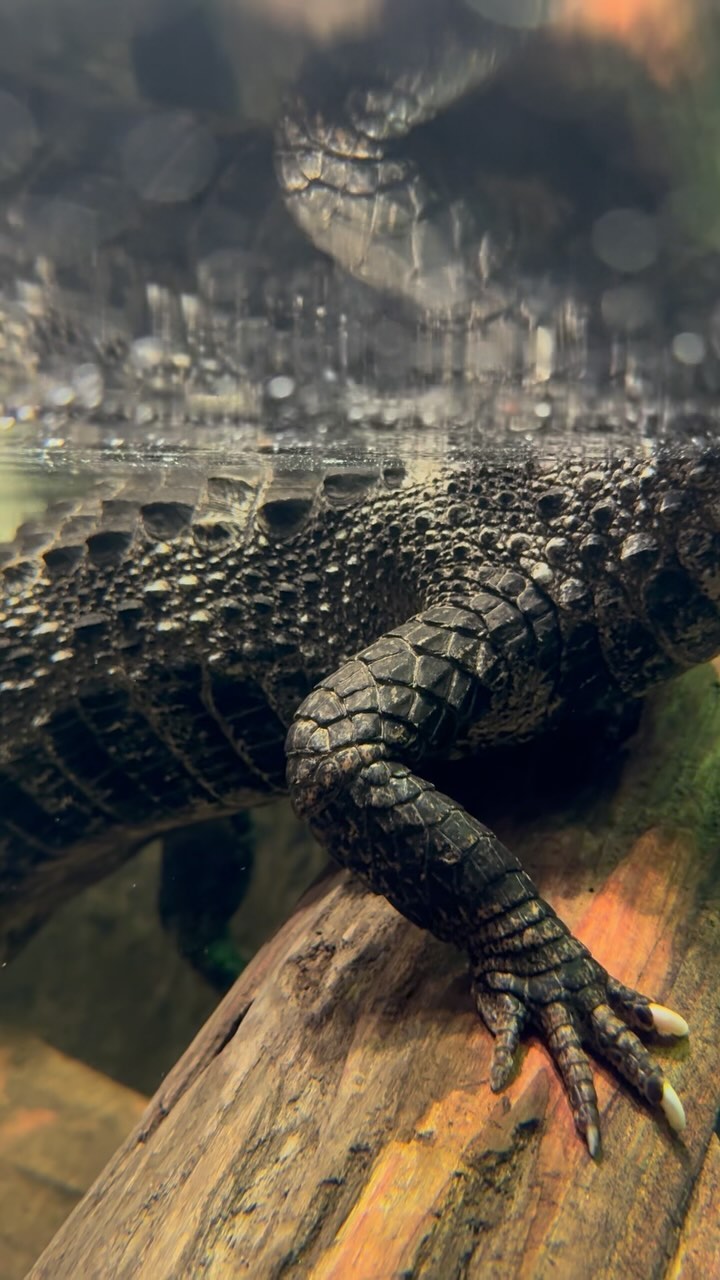- The evolution and lineage of crocodilians over 220 million years.
- Size and predatory behavior of Deinosuchus, an extinct prehistoric crocodilian.
- Ecological role and adaptations of modern crocodilians like caimans, crocodiles, and alligators.
- The impact of human activities on crocodilian populations and their conservation status.
- Efforts and strategies in wildlife conservation and zoo management to protect these ancient reptiles.
Crocodilians, a group of reptiles that includes modern species like caimans, alligators, and crocodiles, have a lineage that extends back 220 million years to the late Triassic period. These ancient creatures have undergone significant evolution, adapting to a range of environmental changes and displaying a remarkable resilience. This long history is significant, providing insight into the survival mechanisms of ancient species and how they adapt to different ecological niches.
One of the most fascinating members of the crocodilian lineage is Deinosuchus. This prehistoric predator, which lived approximately 73 to 82 million years ago, was a relative of today’s caimans and alligators. Deinosuchus was truly enormous, with some individuals reaching lengths of up to 33 feet. Their size suggests they were formidable predators capable of preying on large contemporaneous animals, including dinosaurs like Tyrannosaurus rex. Fossil evidence such as bite marks on dinosaur bones supports the hypothesis that Deinosuchus actively hunted large prey. The immense jaw strength and serrated teeth of Deinosuchus would have made them apex predators in their time.
Modern crocodilians, which include caimans, crocodiles, and alligators, have inherited several key adaptations from their ancient ancestors. These adaptations enable them to thrive in a variety of aquatic environments. Features such as streamlined bodies, powerful tails for swimming, and strong jaws have remained relatively unchanged, underscoring their evolutionary success. The semi-aquatic lifestyle of crocodilians, where they spend much time submerged with only their eyes and nostrils above water, allows them to ambush prey effectively. Their ability to regulate body temperature through behavioral adaptations, like basking in the sun or retreating to cooler waters, also plays a crucial role in their survival.
Human activities, including habitat destruction, pollution, and illegal hunting, have severely impacted crocodilian populations worldwide. Wetland drainage and river damming disrupt natural habitats, critically threatening species like the American crocodile and the gharial. Pollution from agricultural runoff and industrial waste contaminates the water bodies that these reptiles inhabit, introducing toxins that can affect their health and reproductive success. Additionally, illegal hunting for skins and meat remains a significant issue despite international efforts to regulate and curb these activities.
Conservation of crocodilians requires a multi-faceted approach involving habitat protection, legal enforcement, and public education. Wildlife reserves and national parks play a vital role in safeguarding crucial habitats. Legal frameworks like the Convention on International Trade in Endangered Species of Wild Fauna and Flora (CITES) help regulate the trade of crocodilian products to prevent overexploitation. Conservation organizations and zoos also participate in breeding programs to bolster population numbers and reintroduce individuals into the wild. Public education initiatives raise awareness about the ecological importance of crocodilians and promote coexistence with these impressive reptiles.
In zoo management, caring for crocodilians presents unique challenges and rewards. Zoos must provide environments that closely mimic the natural habitats of these reptiles, including access to water bodies for swimming and basking areas for thermoregulation. Proper diet and nutrition are essential to maintain the health and well-being of captive crocodilians, requiring a balanced diet of fish, meat, and supplemental vitamins. Veterinary care is also crucial, with regular health checks and disease prevention measures in place.
Moreover, zoos serve as vital centers for scientific research and conservation outreach. By studying the behavior and physiology of captive crocodilians, researchers can gather valuable data that informs conservation strategies in the wild. Educational programs and exhibits help the public understand the role crocodilians play in their ecosystems, fostering a sense of stewardship towards these ancient reptiles.
Crocodilians, with their deep evolutionary history and unique adaptations, offer profound insights into the resilience of life on Earth. From the colossal Deinosuchus, which once terrorized terrestrial giants, to modern species navigating contemporary threats, their story is a testament to survival and adaptability. Through concerted conservation efforts and scientific research, we can continue to protect these remarkable reptiles and maintain the natural balance they help sustain. By doing so, we ensure that the legacy of crocodilians, a lineage spanning 220 million years, endures for future generations to appreciate and learn from.
*****
Source Description
Crocodilians go back 220 million years!
The Deinosuchus, an extinct relative of caimans, crocodiles, and alligators, was so large they may have preyed on dinosaurs like Tyrannosaurus rex.
Want to see its size for yourself? Click the link in our bio to purchase your tickets today!
class=”instagram-media” data-instgrm-permalink=”https://www.instagram.com/reel/C-tU77MuxRj/” data-instgrm-version=”14″ style=” background: border:0; border-radius:3px; box-shadow:0 0 1px 0 rgba(0,0,0,0.5),0 1px 10px 0 rgba(0,0,0,0.15); margin: 1px; max-width:540px; min-width:326px; padding:0; width:99.375%; width:-webkit-calc(100% – 2px); width:calc(100% – 2px);”>


